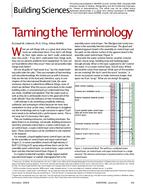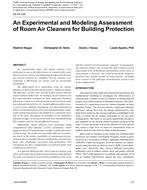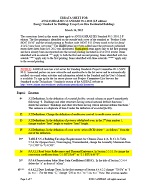Energy rating (ER) is a method used to compare the energy performance of windows. Its purpose is to establish the ranking of energy performance so that consumers can rate the relative energy efficiency of a window with a single number. The ER formula is based on the balance between heat loss due to conduction and air leakage and solar heat gain through the window. Since these heat gain and heat loss parameters have opposite effects on heating and cooling energy, each window can have a separate ER for heating and cooling conditions.
A number of countries use some variation of an ER to rate windows. The ISO provides an international standard method for calculating the ER for windows in ISO 18292: Energy Performance of Fenestration Systems for Residential Buildings, and in Canada, the ER formula is specified in the CSA A440 Standard.
Over the years, some potential issues have been brought forward by industry that could affect the validity of the ER as a tool for properly ranking window energy performance in a predominantly heating climate. These concerns mainly deal with the impact on thermal comfort, the selection of a reference house, and advancements in glazing technology.
This paper will present an analysis of whole house energy consumption and thermal comfort for different fenestration configurations. Computer simulations of thermal comfort parameters will be used to show considerations for balancing energy consumption with thermal comfort when comparing and selecting windows. In addition, the limitations of using a single ER to rank windows based on energy consumption will be identified.
Presented at Thermal Performance of Exterior Envelopes of Whole Buildings XII, December 2013
Citation: Thermal Performance of Exterior Envelopes of Whole Buildings XII
Product Details
- Published:
- 2013
- Number of Pages:
- 8
- File Size:
- 1 file , 1.7 MB
- Product Code(s):
- D-BldConf13-16


